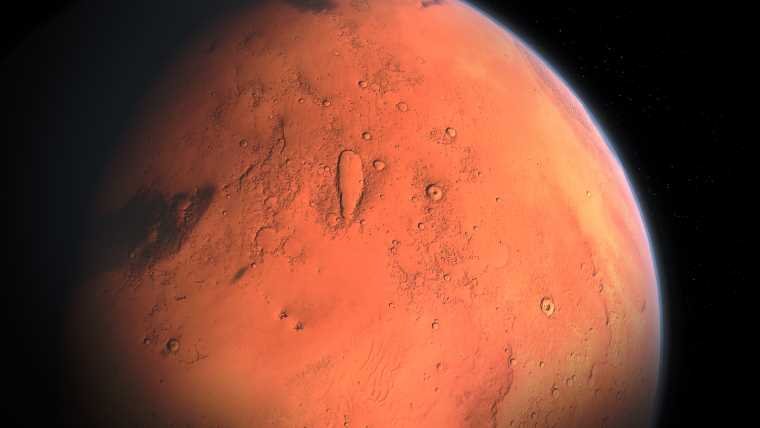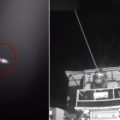Researchers say chemotaxis, a process for chemically inducing movement in an organism, could be a crucial tool in the search for extraterrestrial life on Mars and in other regions of the cosmos.
If an organism is capable of independent movement, it is said to be “motile.” By honing in on movement and forcing organisms to display this ability if present, scientists believe this could offer a valuable new tool in the quest for life beyond Earth.
A Multidisciplinary Approach to Detecting Life on Mars
The German team set its sights on developing a practical and effective method of discovering life on Mars, the next planet humanity is expected to explore in the coming years. Locating a technological solution to a biological question inherently involves a diverse range of skill sets.
Max Riekeles, a researcher at the Technical University of Berlin, explained to The Debrief how his team crossed many disciplines in their search for the best method to identify any Martian lifeforms that may be present.
“Our astrobiology research group is highly interdisciplinary, comprising biologists, aerospace engineers, medical engineers, chemists, geologists, and physicists,” Riekeles explained. “We often hold collaborative discussions to bring together diverse perspectives and brainstorm innovative solutions. Additionally, we draw inspiration from advancements in other fields, particularly medical engineering, to guide our designs. Our key approach is to simplify experiments as much as possible in the early stages and iterative refinement through multiple trials and error.”
Comparing Extraterrestrial Life To Earth Conditions
The team’s new solution is based on the amino acid L-serine, previously known to produce chemotaxis in many species. Since L-serine is believed to also exist on Mars, it would stand to reason that it would hold a similar position in Martian biochemistry. The amino acids proved effective at causing chemotaxis in all three extremophile species tested.
“Concerning its astrobiological relevance, L-serine has been found has been found in a meteorite and in the 162173 Ryugu asteroid, indicating its presence even before the formation of our Solar System,” Riekeles explained. “Given that early Earth and Mars were bombarded by carbonaceous asteroids, L-serine likely exists on Mars.”
“If life developed on Mars with a similar biochemistry to known life on Earth, it seems plausible that L-serine could also be a potent chemoattractant for hypothetical Martian microbes,” Riekes continued. “Additionally, the environmental conditions of early Mars, which were warmer and likely supported liquid water, resemble those of early Earth, making a similar biochemistry of putative Martian microbes plausible.”
Extremophiles and the Search for Extraterrestrial Life
To test their process, the team focused on extremophiles, creatures that can survive in some of Earth’s most inhospitable locations. Such a focus helped cast the widest possible net in the search for ET throughout the galaxy and aligned with what could be expected to thrive in the harsh Martian environment.
Their work included the highly motile Bacillus subtilis spore, which can withstand blistering temperatures up to 100°C. On the other end of the spectrum, they looked at Antarctica’s Pseudoalteromonas haloplanktis, which grows in waters between -2.5° and 29°C. Finally, they investigated the archaeon Haloferax volcanii, known for thriving in highly saline environments like the Dead Sea.
All three responded well to the team’s selected chemotaxis agent.
“We tested three types of microbes – two bacteria and one type of archaea – and found that they all moved toward a chemical called L-serine,” Riekeles said. “This movement, known as chemotaxis, could be a strong indicator of life and could guide future space missions looking for living organisms on Mars or other planets.”
Mimicking Life on Mars
Crucially, the team hedged against the broad unknowns of extraterrestrial life by using two different life forms in their tests.
“Bacteria and archaea are two of the oldest forms of life on Earth, but they move in different ways and evolved motility systems independently from each other,” Riekeles explained. “By testing both groups, we can make life detection methods more reliable for space missions.”
“Especially the usage of H. volcanii broadens the scope of potential life forms that can be detected using chemotaxis-based methodologies, even when it is known that some archaea possess chemotactic systems,” Riekeles added. “Since H. volcanii is thriving in extreme salty environments, it could be a good model for the kinds of life we might find on Mars.”
A Delivery System
The team’s innovation was developing the most streamlined possible apparatus for applying the amino acid to a sample, increasing its practicality for future space missions. Their device consists of a slide with two chambers, one for a sample and the other for the amino acid, separated by a thin membrane.
“If the microbes are alive and able to move, they swim toward the L-serine through the membrane,” Riekeles explained. “This method is easy, affordable, and doesn’t require powerful computers to analyze the results.”
While the process demonstrated strong performance under laboratory conditions, the team still needs to make improvements for real-world implementation on a distant planet. A reduced form factor and more robust build will be necessary to safely transport the device under tight cargo-bearing and turbulent space flight conditions. Additionally, the device needs to be automated for human-free operation.
Continuing Work On Detecting Extraterrestrial Life
Overcoming these challenges will lead to an ideal instrument for investigating our Martian neighbor and further targets in the search for life, including Jupiter’s intriguing moon Europa. As such, the German team continues their work toward producing valuable tools for future space missions.
“We are continuing to develop the device to improve its Technology Readiness Level,” Riekeles said. “Our focus is on making it smaller, more robust, and fully automated to meet the requirements of space exploration. While we are driving the development process internally, we plan to collaborate with third parties, like space agencies, to ensure it becomes flight-ready.”
But that’s not all, the Berlin-based team also plans to identify other uses for their invention. “Many space instruments have practical applications on Earth, and we are exploring ways to adapt our technologies to innovative water quality assessment methods,” Riekeles added.
The paper “Application of Chemotactic Behavior for Life Detection” appeared on February 06, 2025, in Frontiers in Astronomy and Space Sciences.
Ryan Whalen covers science and technology for The Debrief. He holds an MA in History and a Master of Library and Information Science with a certificate in Data Science. He can be contacted at ryan@thedebrief.org, and follow him on Twitter @mdntwvlf.

